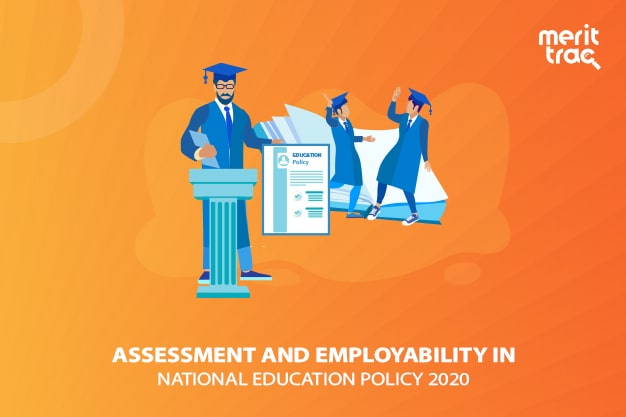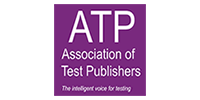
Assessment and Employability in National Education Policy 2020
Date: 12/08/2020 | Category: Assessment , Examination , Government , Education
The Union Cabinet on July 26 has approved the National Education Policy (NEP) to usher a new wave of educational reforms in India. It will replace the 34-year-old NEP constituted during Rajiv Gandhi government in 1986.
The panel headed by former ISRO chief Kasturirangan had submitted the document in December 2018. The government placed it for public feedback after the general election in May 2019.
The major recommendation in the new NEP is widening the scope of free and compulsory education for children aged between three and 18 years old. The 10+2 pattern will be replaced by 5+3+3+4 in school education. The demarcation between various streams, curricular and co-curricular activities, and the vocational and non-vocational subject will be discontinued.
On the education and assessment front, frequent exams will be held only in the classes of 3, 5 and 8, and the board exams at 10th and 12th standards may see a drastic change.
The NEP has envisaged a smooth continuation from school education to higher education. The proposal mandate is of setting up of multi-disciplinary higher education institutions. Also, the introduction of four-year graduation with multiple entries and exit options is one of the highlights in the NEP. This is a significant step towards modernizing and globalizing our education system. The emphasis on research as well as employability is also a forward step. Direct access to PhD after masters will increase our research score in the world.
Establishment of campuses of the top 100 foreign universities in India will lead to stiff competition and ultimately improve our higher education standards. The influx of foreign students will upsurge and let India become an education hub. Instead of the Ministry of Human Resource Development, the NEP recommended changing the name to the Ministry of Education. Higher Education Commission of India(HECI), centralized and common higher education regulator was also proposed to substitute AICTE and UGC.
NEP also proposed to implement the same set of norms for regulation, accreditation and academic standards to govern public and private higher education institutions. Affiliation of colleges is to be phased out in 15 years and a stage-wise mechanism is to be established for granting graded autonomy to colleges.
Employment is key
The crust of the NEP is the skills of students since the lower classes. When the division between streams, or curricular and co-curricular activities, or vocational and non-vocational subjects are removed, the students get a chance to pursue the education based on their aptitude and interests, which is impossible in the current system. Thus, the students are able to acquire the necessary knowledge and skills, in other words, students will consume only useful content.
NEP 2020 aims to increase the Gross Enrolment Ratio (GRE) in higher education including vocational education from 26.3 per cent in 2018 to 50 per cent by 2035 and aims to add 3.5 crore new seats to higher education institutions.
By the time they finish school, the students will have a specialized area of interest and pursue higher education in that area. In higher education, the policy envisages broad-based, multi-disciplinary, holistic Under Graduate education with flexible curricula, creative combinations of subjects, integration of vocational education and entry and exit after each year with appropriate certification.
The credit earned throughout the course will be stored digitally in an Academic Bank of Credit, that can be transferred and counted towards the final degree. To deliver best multidisciplinary education with global standard in India, the policy recommended Multidisciplinary Education and Research Universities (MERUs) at par with IITs and IIMs.
In short, the policy gives stress on the employment and employability of the students with opportunities to choose courses of interests and certification thereby aims to bridge the skill gap in the job market.
Online courses
A host of recommendations in the NEP focus on expanding the scope of online education in the country. Measures such as online courses and digital repositories, funding for research, improved student services, credit-based recognition of MOOCs, etc., will be taken to ensure distance learning is at par with the highest quality in-class programmes.
A comprehensive set of recommendations for promoting online education consequent to the recent rise in epidemics and pandemics in order to ensure preparedness with alternative modes of quality education whenever and wherever traditional modes of education are not possible has been covered.
A dedicated unit for the purpose of orchestrating the building of digital infrastructure, digital content and capacity building will be created in the HRD ministry to look after the e-education needs of both school and higher education.
A rejig in assessment
PARAKH (Performance Assessment, Review, and Analysis of Knowledge for Holistic Development), a new National Assessment Centre, will be set up as a standard-setting body. An autonomous body, the National Educational Technology Forum (NETF), will be created to provide a platform for the free exchange of ideas on the use of technology to enhance learning, assessment, planning, administration.
By 2022, the National Council for Teachers Education will develop a common National Professional Standards for Teachers (NPST) in consultation with NCERT, SCERTs, teachers and expert organizations from across levels and regions.
The NEP has reoriented the approach to assessment from the lower classes. Stopping the current assessment based on ‘memory tests’, the NEP proposed a holistic assessment to ensure the student has earned the required knowledge and skillsets. The annual examinations in the primary, secondary and higher secondary are given up, instead, the examination will be conducted in classes of 3, 5, 8, 10 and 12. The NEP proposed to reduce the concentration of 10th and 12th examinations, that will ease the pressure on students, teachers and parents.
The credit system in the undergraduate level will boost the confidence of students as they get a certificate while discontinuing the course in midway thereby to kick off their career. The credit will be stored in the Academic Bank of Credit. In this way, they can re-enter and finish the entire duration of course anytime they wish. The assessment is expected to be more comprehensive and centralized in which institutions across the country can access the data whenever the student approaches them to enrol for a course or credit.
Assessing the application of knowledge is going to be the model of assessment. Another crucial change is the report card, which is a continuous and comprehensive evaluation (CCE) with a holistic assessment. It will be a record of all-round activities during academic time. A common entrance examination for universities is another suggestion in the NEP. It could be administered by National Testing Agency (NTA).
A well-defined assessment architecture for a National Assessment Strategy, almost as if embedded in stealth mode was also proposed.A strategy that can drive fundamental change in a way that enables action at the level of state, school, teacher, and scholar, without disrupting the deep, almost existential faith in examinations, but works with it constructively to improve learning. In sum, the National Education Policy 2020 is a pathbreaking policy to lead our education system to new heights.












 Sales Hotline: USA: +1 646 916 0939 / Others: +91 80619 14700
Sales Hotline: USA: +1 646 916 0939 / Others: +91 80619 14700


